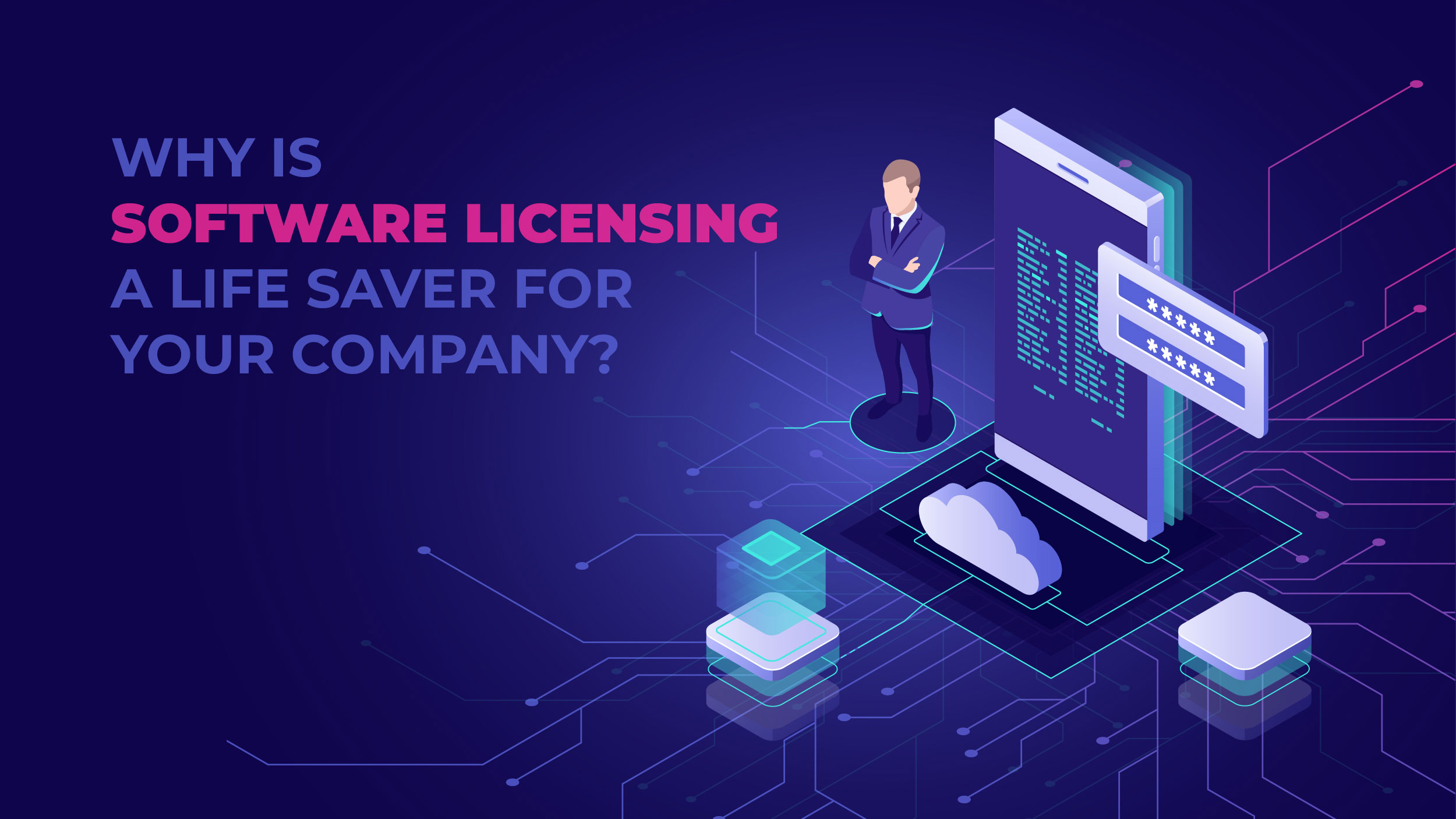Every organization uses software to control business operations, communicate with staff, clients, and suppliers, among many other things. Most of the time, before software items can be downloaded, installed, or accessed, licenses must be activated, or “terms and conditions” must be accepted.
If you create or sell any software, you must safeguard it with a strong software licensing engine to avoid giving away your company’s most important assets. Let’s get going and understand all about software licensing, shall we?
What is Software Licensing?
Software licensing is the fundamental technology and procedure that enables software providers and gadget manufacturers to monetize and safeguard their products.
Publishers create and maintain their internal system or employ software licensing solutions specifically designed to work with their product lines.
In the end, a sophisticated approach to software licensing and entitlement management enables you to:
- In on-premises, SaaS, and hybrid implementations, control use rights
- Add additional price structures, such as usage-based monetization
- Flexible packaging, bundling, and feature configuration should be allowed.
- Protect against copying, tampering, and hacking.
- Apply monetization strategies for IoT devices.
- Enable safe activation and delivery
- Ensure license adherence
The software licensing process, which supports every aspect of sales, fulfillment, and security, is essential to successfully monetizing software. Publishers require strong frameworks to support growth, provide services to customers, and safeguard the intellectual property (IP) of any company.
The three main types of software licenses are open-source, free, and proprietary. The conditions under which users may redistribute or copy the program for potential development or use are what set it apart.
Camtasia Studio, Crystal Reports, and Adobe InDesign are the top three enterprise licenses with the least amount of usage. About 47% of enterprise-licensed software is wasted in the education sector. At just 28%, the government sector wastes the least.
How Does Software Licensing Work?

A software licensing framework is comparable to a car rental service. You require a key and authorization from the owner to operate a rental vehicle. For proprietary software, the same holds true. Without a key or the appropriate permissions being in place first, the locked software will not be able to be used. Typically, permission is obtained by paying the required amount.
Users can access the software through a variety of licensing models, ranging from straightforward perpetual licenses and subscription licenses to more complex models like floating licensing.
A perpetual license is a key that is always active and grants a named user access for all time. A subscription license entails the customer paying a lower amount, typically each month, in exchange for ongoing access to the software program. A floating license is one in which fewer licenses are shared by a wider group of users according to the principle of first-come, first-served.
There are also additional, more sophisticated licensing alternatives available, such as consumption-based licensing, where access to a software application is restricted by time or some other measurable factor or action.
Also Read: Are Luxury Electric Vehicles Worth the Premium Price Tag?
Advantages of Software Licensing
When used properly, software licensing enables you to efficiently monetize the software you’ve created because only users with legitimate licenses can access your program. The elimination of income leakage is one of the objectives of software licensing.
You can greatly automate the licensing procedure with a contemporary software licensing solution in place, allowing your end users to self-serve and begin using your application right away.
Similarly, as a software vendor, you would have less manual license administration with a modern system. Instead of creating more friction in your business process, software licensing should try to remove it!
But the licensing system you use ultimately determines everything. Unfortunately, a lot of software companies still rely on antiquated techniques like license servers, keys, and dongles. Software licensing has traditionally been implemented using some mix of these techniques, however, these days we live in the era of cloud-based licensing solutions, which do away with the majority or all of the friction points present in legacy licensing techniques.
Why is Software Licensing a Life Saver for Your Company?

Any software must first have a valid license in order to be installed. The use of the software would be prohibited if this weren’t the case. Understanding software licensing is crucial for firms using the software since you don’t want to pay for licenses that you aren’t using. Having too few can leave a business open to an expensive prospective lawsuit while having too many can be a waste of resources. Finding the correct software license agreement is crucial since it can make managing the company’s software much simpler.
Getting a software license agreement is also advantageous for the following reasons:
- Protects against software abuse by customers. Nothing prevents your customer from attempting to replicate your software for their personal gain unless a valid licensing agreement is obtained. Customers that duplicate software typically do so to save money by installing it on many computers, but they could also try to resell it for a profit. In any case, you can lose out on prospective money.
- Permits you to obtain software licenses without having to sell them. Your software can be licensed out with limitations if you let clients pay for a license while keeping all of your rights to it. In essence, this provides you greater control over how your software is used and disseminated and increases your potential for long-term financial gain.
- Allows you to make a warranty disclaimer. Every time a customer buys a product, they have certain expectations, and this is also true for software. You can force the user to accept the software as-is or as-available by including a disclaimer of warranties in your license agreement, putting the risk on them.
- Reduces your legal responsibility. Limiting your liability is crucial since it defends your business from future litigation.
- Enables you to revoke licenses at any time. By including this clause in the agreement, you have the flexibility to revoke or suspend licenses whenever you want and for any reason, enabling you to maintain total control over the program.
Final Thoughts on Software Licensing
Software licensing is a crucial technique to safeguard the owner’s rights and stop software abuse. Depending on the kind of software and the particular requirements of the parties involved, the terms and conditions of a software license agreement may change. For businesses wishing to employ third-party software, a thorough grasp of the many types of software licenses is crucial, and it’s crucial to select the license that best meets their unique requirements. Additionally, compared to unlicensed software, which increases the risk of security breaches, licensed software offers superior defense against cybersecurity threats. In the end, software licensing makes it possible for both software creators and end users to work in a safe and effective environment.




